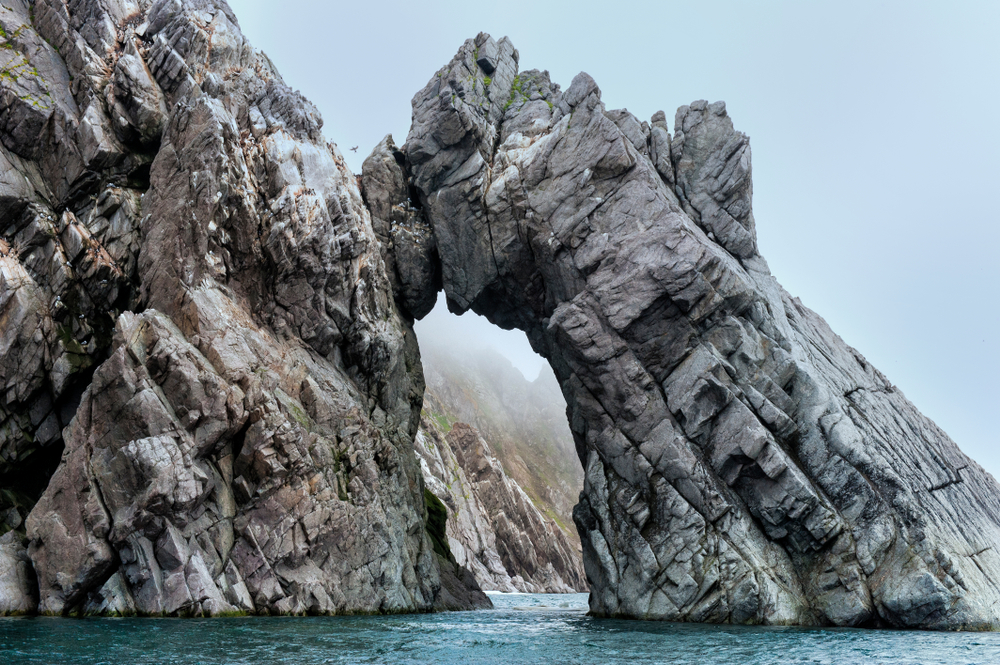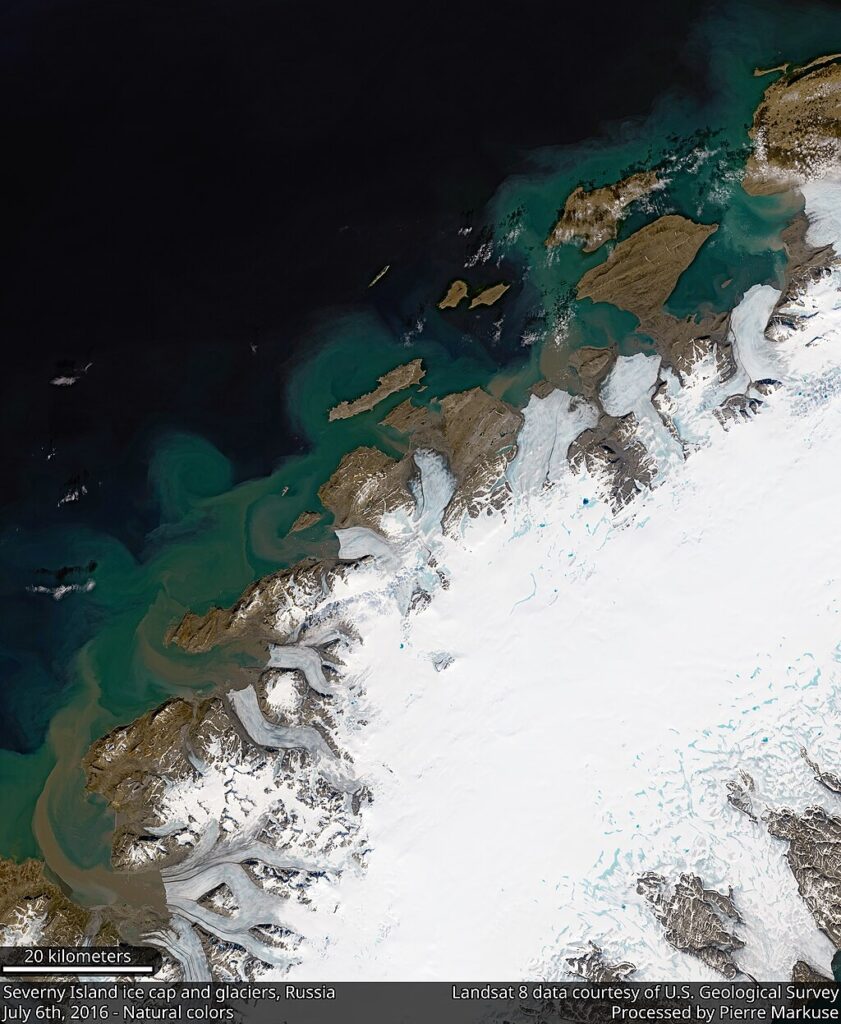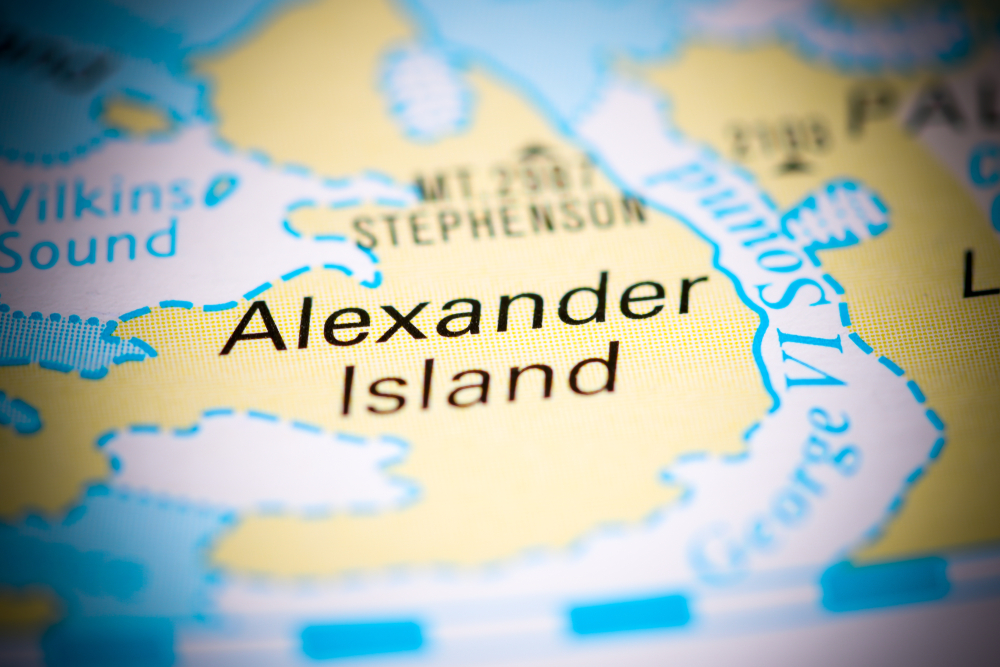Exploring the world’s largest uninhabited islands offers a glimpse into some of the most untouched landscapes on Earth. These remote islands, free from permanent human settlement, are defined by their vast, rugged terrain and unique ecosystems. From icy Arctic expanses to isolated Antarctic shores, these host rare wildlife, ancient fossils, and invaluable scientific research sites. Their harsh climates and rugged beauty make them both challenging and fascinating places to study. Here’s a closer look at the largest uninhabited islands, each with its own remarkable features and natural wonders.
Prince Charles Island

Prince Charles Island is located in the Canadian Arctic Archipelago and covers about 9,521 square kilometers. The island, surrounded by icy waters, has a tundra landscape marked by rocky outcrops and shallow lakes. Its climate is frigid, with long winters and short, cool summers, making it uninhabitable for humans. It supports a limited number of Arctic species, including migratory birds and small mammals, adapting to its harsh conditions. Due to its location, it is an essential part of Canadian Arctic wildlife research, with studies on its fragile ecosystem. Its remoteness has allowed it to remain largely undisturbed, making it a valuable area for observing natural Arctic processes. Moreover, researchers focus on studying the island’s permafrost and its response to warming temperatures, as this region is vulnerable to climate shifts.
Herald Island

Herald Island is a small island located in the Chukchi Sea, near Wrangel Island, covering an area of about 11 square kilometers. Its rocky terrain and cliff-lined shores provide nesting grounds for seabirds, including puffins and guillemots. Due to its size and harsh conditions, it has no human settlements. It is protected as part of the Wrangel Island Nature Reserve, a UNESCO World Heritage site. Its isolation and limited human presence have preserved Herald Island’s ecosystem, making it a valuable site for studying Arctic wildlife. Scientists often focus on the island’s bird populations to understand migratory patterns and species adaptation. Its location and minimal human impact make it an exceptional natural habitat.
Bathurst Island

Bathurst Island is part of the Canadian Arctic Archipelago, covering an area of about 16,042 square kilometers. Its landscape features rolling hills, tundra, and a scattering of lakes and rivers. It experiences extremely cold temperatures, with long, dark winters, making it uninhabitable. It is known for its unique population of Peary caribou, an endangered subspecies adapted to the Arctic environment. In summer, migratory birds flock to the island’s shores, taking advantage of its remote, undisturbed environment. Researchers monitor wildlife populations on it, particularly caribou and bird species, as indicators of ecosystem health. Due to its isolation, it serves as a critical site for studying Arctic ecology and climate resilience.
Melville Island

Melville Island, located in the Canadian Arctic Archipelago, covers approximately 42,149 square kilometers. Its landscape includes high plateaus, coastal cliffs, and tundra, with elevations reaching up to 750 meters. Its harsh climate and remoteness make it unsuitable for permanent human habitation. It is home to unique wildlife, including muskoxen, Arctic hares, and migratory birds. Due to its isolation, its environment remains largely pristine, providing valuable data for climate change studies. It also has significant historical importance as a site explored by early Arctic expeditions searching for the Northwest Passage. Researchers continue to study its ecosystems, monitoring how Arctic wildlife adapts to a changing environment.
Berkner Island

Located in the Weddell Sea region of Antarctica, Berkner Island covers an area of approximately 43,000 square kilometers. It is entirely covered by ice, with its highest point reaching about 869 meters. Its surface consists of vast ice plains and small peaks protruding through the ice, creating a unique landscape. Its extreme climate and isolation make it uninhabitable, with no permanent human settlements. The surrounding waters teem with Antarctic marine life, including seals, penguins, and various fish species, which rely on the nutrient-rich waters. It is of particular interest to scientists studying ice core samples, as its ancient ice layers offer insights into past climate conditions. Though challenging to reach, it remains an important site for polar research.
Axel Heiberg Island

Axel Heiberg Island, located in the Arctic Archipelago of Canada, spans approximately 43,178 square kilometers. Known for its unique fossilized forest, dating back 45 million years, it is a treasure trove for paleontologists. Its terrain is dominated by mountainous regions and glaciers, with the highest elevation reaching around 2,210 meters. Its remote location and extreme Arctic conditions contribute to its uninhabited status. However, its pristine environment supports a range of Arctic wildlife, including caribou and Arctic wolves. Its unique geological features also make it a significant site for climate research, as scientists study the effects of ancient climate conditions on its fossilized ecosystems. Its permafrost preserves fossil records exceptionally well, allowing for detailed studies of ancient flora and fauna.
Severny Island

Severny Island, part of the Novaya Zemlya archipelago in Russia, spans approximately 48,904 square kilometers, making it the third-largest uninhabited island globally. Its landscape is characterized by rugged terrain, glaciers, and tundra, with the Severny Island ice cap covering a significant portion. Its highest elevation reaches around 1,547 meters. Its harsh Arctic climate and remoteness have deterred permanent human settlement. It is home to Arctic wildlife, including polar bears, reindeer, and various seabird species. Historically, it was a site for Soviet nuclear tests during the Cold War, notably the Tsar Bomba test in 1961. Today, it is part of the Russian Arctic National Park, emphasizing conservation and scientific research.
Alexander Island

Situated in the Bellingshausen Sea of Antarctica, Alexander Island is the second-largest uninhabited island, encompassing approximately 49,070 square kilometers. It is predominantly covered by ice and features a rugged landscape with mountain ranges and glaciers. Its highest point is Mount Stephenson, which rises to about 2,987 meters. Due to its extreme climate and isolation, it remains devoid of permanent human habitation. Its environment provides a habitat for various Antarctic wildlife, including seals and penguins along its coastal areas. Scientific research on it focuses on glaciology and climate studies, contributing to the understanding of Antarctic ice dynamics. Its remote and pristine conditions make it a valuable natural laboratory for studying Earth’s polar regions.
Devon Island

Devon Island, located in Baffin Bay, Nunavut, Canada, is one of the world’s largest uninhabited islands, covering approximately 55,247 square kilometers. Its terrain is predominantly a polar desert, with a significant portion covered by the Devon Ice Cap, which reaches elevations up to 1,920 meters. Its harsh Arctic climate supports limited wildlife, including muskoxen and small bird species. Notably, it hosts the Haughton Impact Crater, a 20-kilometer-wide feature formed by a meteorite impact around 39 million years ago. This crater’s Mars-like environment has made the island a valuable site for NASA’s Haughton-Mars Project, where researchers simulate Martian conditions for scientific studies. The island’s desolate landscape has also been used to test space exploration equipment and train astronauts.
Ellesmere Island

Ellesmere Island, located in the northernmost part of Canada, is the third-largest island in the country, covering an area of about 196,235 square kilometers. Its landscape is dominated by mountains, glaciers, and ice shelves, with Barbeau Peak, Canada’s highest point, reaching 2,616 meters. Due to its frigid climate and remote location, it is uninhabitable for humans. It is a crucial habitat for Arctic wildlife, including polar bears, Arctic wolves, and walruses. Researchers are particularly interested in its glaciers and ice shelves, which provide valuable data on Arctic climate conditions. Its untouched environment also serves as a refuge for endangered species, making it a focus of conservation efforts. Its pristine state allows scientists to monitor Arctic ecosystems without human interference.
This article originally appeared on Rarest.org.
More from Rarest.org
20 Keystone Species That Play a Crucial Role in Their Habitats

Keystone species are essential to maintaining the balance of their ecosystems. Without them, the structure of the habitat could change dramatically. These species often influence many other organisms in their environment, helping to regulate populations and maintain biodiversity. Read More.
18 Rare and Exotic Fruits You Can Grow at Home

Growing your own exotic fruits at home is an exciting way to add rare flavors to your garden. Many of these fruits offer unique tastes that are hard to find in stores. Read More.
14 Unique Trees with Vibrant Foliage Throughout the Year

Trees with vibrant foliage can completely transform a landscape, bringing color and life to every season. Some species stand out for their stunning hues, with colors that shift as the year progresses. Read More.
